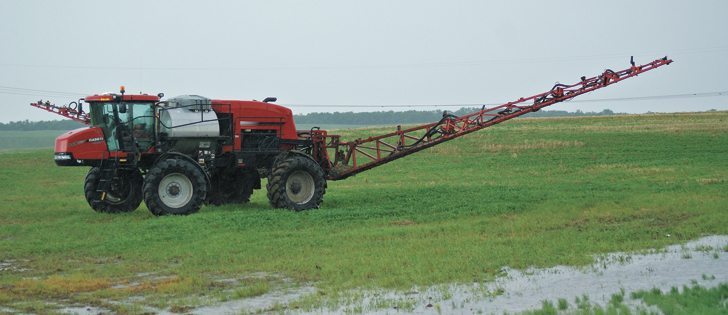EDMONTON — Farmers should forget about taking big strides to boost their bottom line, says a Saskatchewan farmer
Instead, they should concentrate on baby steps to make their business grow.
Kristjan Hebert said farmers need to focus on small improvements and not search for unicorns to make money on the farm.
“You want a whole bunch of small incremental improvements that improve the bottom line,” Herbert told farmers during FarmTech.
“Just little changes over and over and over.”
Instead of spending all day working, he suggested writing down the three or four jobs that need to be done for the day, week or year and focus on the priorities.
Read Also

Canadian Food Inspection Agency extends chronic wasting disease control program consultation deadline
Date extended for consultation period of changes to CWD program
Herbert said he used to sweep his shop floor every week but now pays a young person to tidy the shop and allow him to concentrate on the larger jobs.
Hiring someone else to sweep the shop floor is just one example of alternative thinking that farmers need to adopt to keep their farms profitable.
Herbert took a roundabout way to the family farm. He earned a commerce degree and worked with accounting firm MNP for six years before returning to Herbert Grain Ventures near Fairlight, Sask.Small ste
“It was a commerce degree that made me want to farm,” he said.
Challenging the norm is what has made kept him moving forward.
Asking questions such as, “why not seed 24 hours?” pushed him toward the answers.
Installing light bars on equipment and entering the field before dark to go around the edges and potholes is a way to allow farmers to seed more acres without buying more equipment, he said.
“Just asking questions different forced me to answer it different.”
Farmers like to blame Mother Nature for halting seeding or harvest, but how many farmers have a plan for rain delays, he said.
Taking the first day off to rest and readying the equipment the next day will ensure seeding starts as soon as possible after the rain, he said.
Having a written strategy is key to farmers’ sticking with their goals, he added.
“Go into ventures with a plan, not only if they succeed, but also if it goes bad.”
Herbert said farmers don’t need to be good at everything, but must find little things to be good at and replicate it.
“The top 25 percent of farms are running away with agriculture,” he said.
“Management, not acres, drives profitability.”
Growing 42 bushels per acre instead of 40 bu. adds up, as does selling canola for 50 cents a bu. more than the average and finding savings on inputs such as fuel and chemical.















